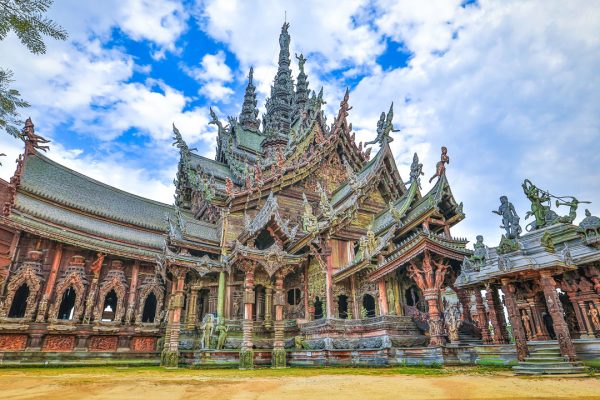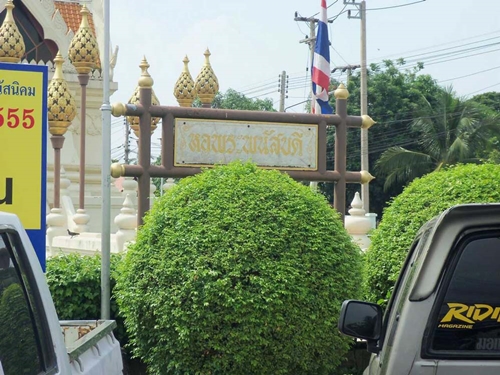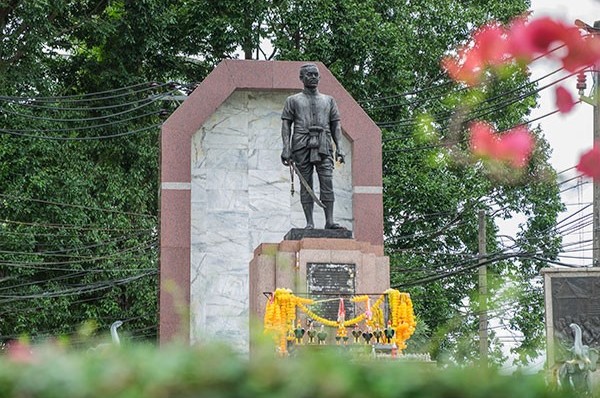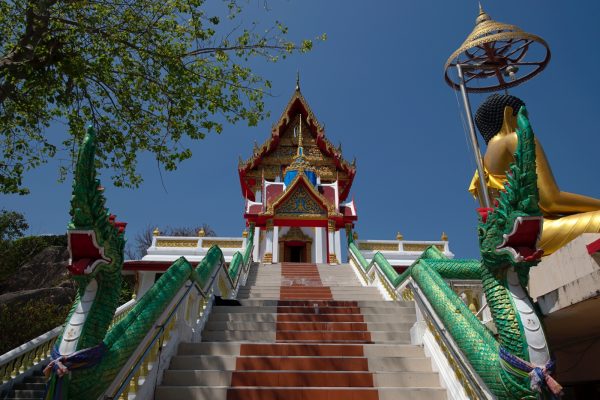Songkhla City Shrine
Songkhla is a peaceful province. Local people have a simple lifestyle. It is different from Hat Yai which is the commercial center of the province. There are beautiful ancient buildings in Chino-Portuguese art style on NakornNai, NakornNok, Nang Ngam, and Yala Roads. Songkhla City Shrine is a Chinese-style shrine on Nang Ngam Road. It was built at the same time when Songkhla City was established. Nang Ngam road is also the center of local food and Thai food mage by local people that you can buy as souvenirs such as “Samopannee”, “Thong Muan”, “Thong Plub”, and “Tao Huay”. The shop has been doing these desserts for over 50 years. The shop is located opposite to the shrine. You can also taste the original Thai dessert named “Khao Too” here.Songkhla City Shrine is the ancient architecture of Rattanakosin period. It is a Chinese-style building. It was built in the era of Phraya VichianSiri (Tianseng Na Songkhla), the regent of Songkhla Province. Inside, there is a city pillar made from Javanese cassia wood. In 1842, King Nangklao gave a piece of Javanese cassia woo a large candle, and offerings given as alms to Phraya Songkhla (Tianseng) to make the city pillar. The king also selected PhraUdomPidok as the leader of Buddhist ceremony with 8 monks in ThananukromPrian level and selected PhraKruAssasachanPhram as the leader of Hinduceremony with 8 Hindu people.The city pillar placement ceremony began when Phraya Songkhla (Tianseng), the regent of Songkhlawith officers and local people built ceremony halls in 4 directions at the center of Songkhla City in front of the City Pillar Shrine, Muang Districtand created a large parade including Thai and Chinese people to carry the wood and the candle to the ceremony hall of Buddhist monks. The group of Thananukrom Charoen PhraParit and monks prayed. At the sacred time, the 10th day of waxing moon in the 4th month, in the year of tiger, 1204th year of Thai minor era (1842) at 7.10 a.m. or 10 March 1842, Phraya Songkhla (Tianseng) with PhraKhruAssadachan and Hinsu priests placed the wood at the center of Songkhla which is called “LakMuang” until nowadays.After the pillar was located, a party was held for 5 days and 5 nights. There are a Khon performing hall, a puppet performing hall, a Chinese opera performing hall, and 4 Norah performing halls. Phraya Songkhla (Tianseng) gave food to 22 monks. Later, he built 3 Chinese-style buildings to cover the pillar and a shrine of Chao SuaMuang. In 1917 in the era of King Vajiravudh, Prince YugalaDighambara, the viceroy of southern region, wrote an announcement that the pillar was rotten by termites. Local people and merchants in Songkhla therefore donated their money got building the pillar with concrete cement. The good time to place the new pillar was on 1 March 1917 or the 7th day of waning moon in the 4thmonth, 22 minutes and 36 seconds before noon.Four astrologers stood at each direction and placed the soil into the hole of the pillar and then placed the pillar into the hole and covered the land until 8.41.36 a.m. which is the best time. This pillar therefore has been existing with Songkhla Province and people until nowadays.Department of Fine Arts promoted City Pillar Shrine to be the national ancient object on 25 February1935. Its area is 13 wah long in the northern direction, 1 sen and 5 wah long in the eastern direction, 13 wah long in the southern direction, and 1 sen 5 wah in the western direction.The shrine is opened every day from 7 a.m. to 5 p.m.





